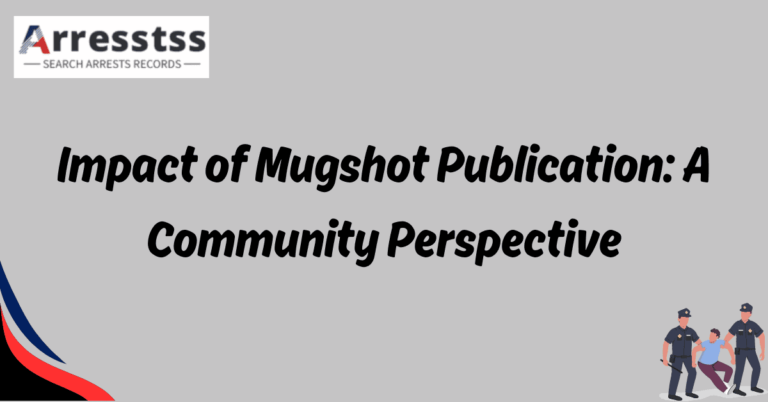Artistic Interpretations: The Cultural Influence of Mugshots
Evolution of Mugshots
Throughout history, artistic interpretations have played a significant role in shaping and reflecting the cultural landscape of societies. From paintings to sculptures, these creative expressions have provided a glimpse into the beliefs, values, and experiences of different communities. One such intriguing form of artistic representation that has gained attention in recent years is mugshots.
Origins of Mugshots
Mugshots, typically associated with criminal records and law enforcement, have transcended their original purpose and become a subject of fascination for artists and enthusiasts alike. These candid photographs capture individuals at a moment of vulnerability, revealing emotions, stories, and sometimes even societal issues. Artists have recognized the potential of mugshots as a medium for exploring themes of identity, social justice, and the human condition.
Mugshots as a Reflection of Identity
Mugshots provide a unique window into the lives of those who have encountered the criminal justice system. Each photograph captures a person’s facial features, expressions, and body language, allowing viewers to form their interpretations. Artists have used mugshots to delve into questions of personal identity, exploring how society labels individuals and the impact of these labels on their lives.
Mugshots and Social Justice
With their association with criminal records, mugshots also become a powerful tool in examining issues of social justice. The disproportionate representation of certain communities in mugshots raises questions about systemic biases and the way society treats marginalized groups. Artists have used mugshots as a platform to shed light on these disparities, sparking conversations and advocating for change.
Human Condition Captured
Mugshots capture individuals in moments of vulnerability and distress, revealing raw emotions and telling stories that might otherwise go unnoticed. Artists have recognized the power of these images to humanize those who are often dehumanized by society. By highlighting the humanity within mugshots, they aim to challenge preconceived notions and foster empathy.
Impact of Mugshot Art
Mugshot art has gained significant attention in recent years, both within the art world and in popular culture. Exhibitions showcasing mugshot-inspired artworks have drawn large audiences, prompting discussions on topics such as privacy, criminal justice reform, and the power of visual representation. This growing interest has led to collaborations between artists, scholars, and activists, further amplifying the impact of mugshot art.
FAQ’s
Artistic interpretations have always played a crucial role in shaping and reflecting the cultural landscape of societies. Through various forms such as paintings, sculptures, and photography, artists have been able to capture and convey the beliefs, values, and experiences of different communities. These creative expressions not only provide aesthetic pleasure but also serve as a means of communication and self-expression.
The significance of artistic interpretations lies in their ability to challenge societal norms, provoke thought, and inspire change. They have the power to ignite conversations, raise awareness about social issues, and offer new perspectives on the world around us. Art allows individuals to connect on a deeper level, fostering empathy and understanding among diverse groups of people.
Mugshots are photographs taken by law enforcement agencies at the time of an individual’s arrest. They are typically associated with criminal records and serve as a means of identification. However, in recent years, mugshots have garnered significant attention beyond their original purpose.
These candid photographs have become a subject of fascination for artists and enthusiasts due to their raw and unfiltered nature. Mugshots capture individuals in a moment of vulnerability, revealing a range of emotions and stories. They offer a glimpse into the human condition, showcasing the complexities of life and the consequences of one’s actions.
Artists have recognized the potential of mugshots as a powerful medium for exploring various themes. Mugshots provide a unique opportunity to delve into issues of identity, social justice, and the human experience. Through their artistic interpretations, artists can shed light on the complexities of criminality, societal biases, and the impact of the justice system on individuals and communities.
Some artists use mugshots as a way to challenge stereotypes and question prevailing narratives surrounding crime and punishment. By humanizing the individuals in the photographs, they aim to provoke empathy and understanding. Others explore the relationship between identity and criminality, examining how society’s perceptions and judgments can shape a person’s self-image.
What is the cultural influence of mugshots?
Mugshots have had a significant cultural influence, particularly in recent years. They have become a source of inspiration for various art forms, including paintings, photography, and installations. Artists draw upon mugshots to create thought-provoking pieces that spark conversations about societal issues.
Mugshots also serve as a reminder of the impact of the justice system on individuals and communities. They raise questions about the fairness and objectivity of law enforcement, highlighting the need for reform and social change. By shedding light on the stories behind the faces in the photographs, artists contribute to a broader dialogue on criminal justice and its implications.
Artistic interpretations of mugshots have the potential to generate social awareness and promote dialogue on important issues. By presenting these candid photographs in a different context, artists encourage viewers to question their preconceptions and biases. They challenge the stereotypes associated with mugshots and invite a more nuanced understanding of the individuals portrayed.
Through their artwork, artists can bring attention to systemic inequalities, racial profiling, and other social issues within the criminal justice system. They can amplify marginalized voices, shed light on injustices, and advocate for change. Art has the power to reach people on an emotional level, inspiring empathy and fostering a sense of collective responsibility.







